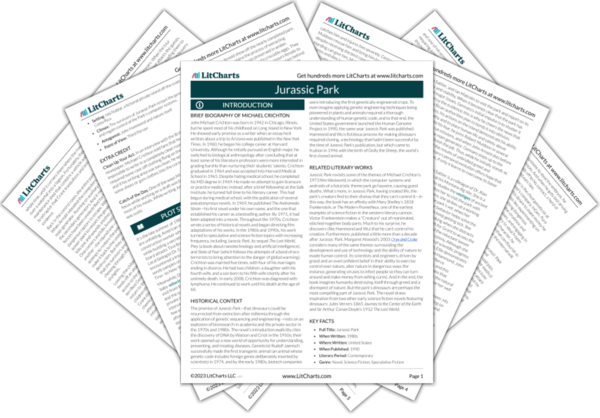Although he has the final word on whether the park continues toward its opening or not, Gennaro’s lack of expertise on dinosaurs, genetic engineering, or amusement parks makes him unqualified to judge the system. And he proves willing to accept the park’s systems as adequate without subjecting them to any critical review. Malcolm yet again points out that the park operators have massive blind spots. Readers might not yet understand the significance of the bell curve yet, either. But readers’ ignorance—unlike the operators’—can be excused because they exist outside the system. Those responsible for running it, by contrast, should not allow their biases and expectations to blind them to reality.


